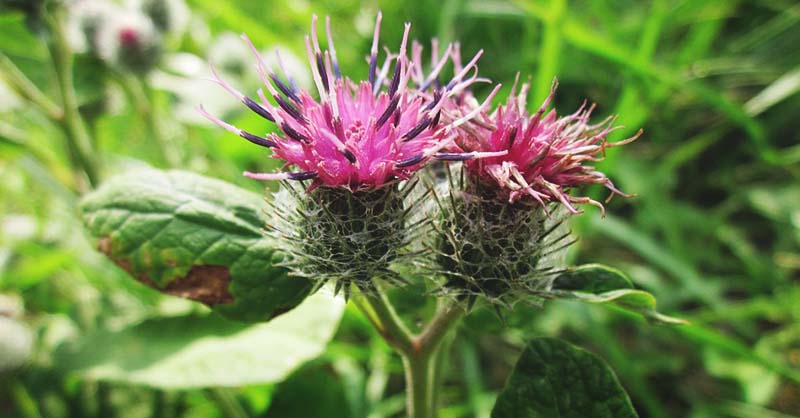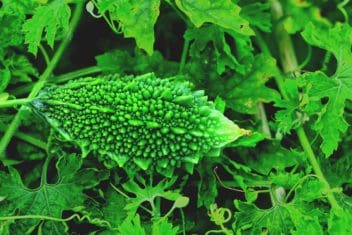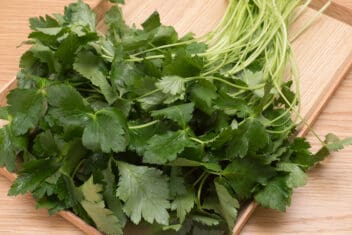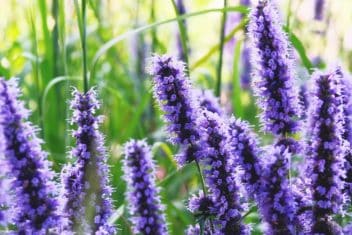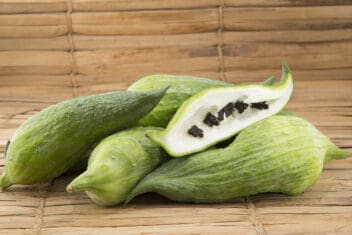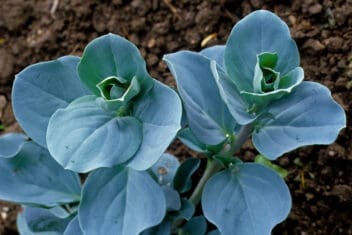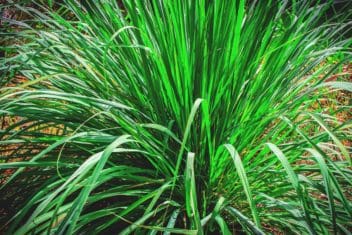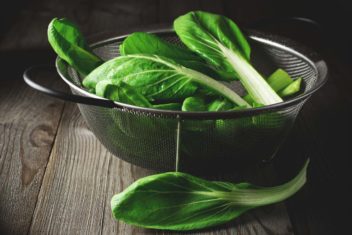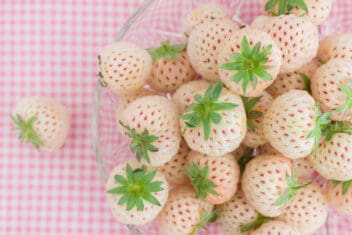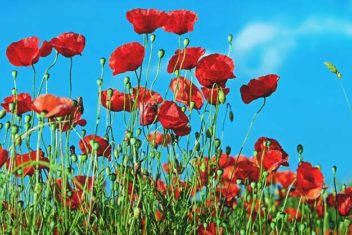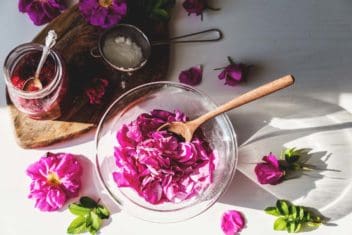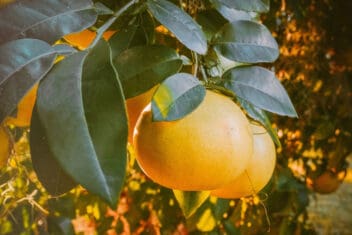I have to admit that when my wife said she wanted seeds to start growing burdock, I thought she meant a different plant. I have always considered burdock a weed that is a menace wherever it grows, and I have even sprayed it a few times to get rid of it.
Now that we’ve been growing burdock for a few years, I’m a convert. Burdock is a wonder herb in my book. Not only is it seriously good for you, but
Burdock has anti-bacterial and anti-inflammatory properties and contains compounds that are antioxidants. You can eat the roots boiled, sautéed or roasted. You’ll often find burdock leaves in Japanese cuisine and Native Americans use the dried roots in winter stews.
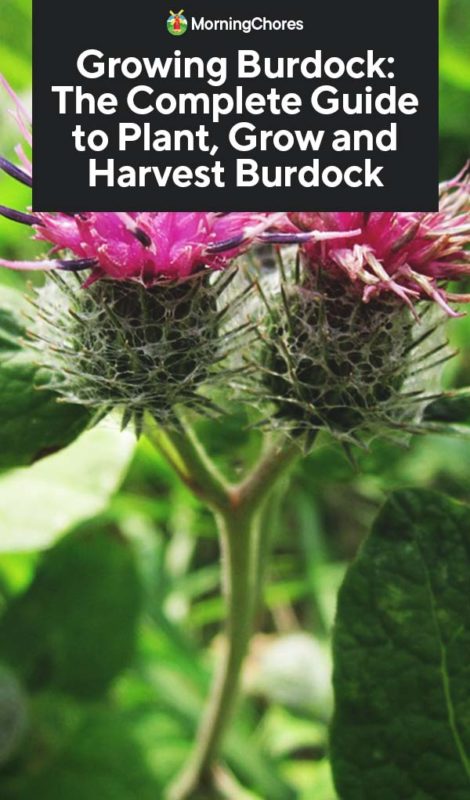
Burdock Varieties
There are about ten types of burdock, but only two are commonly
If you have seen g
Great Burdock

Great Burdock can grow to about nine feet tall, particularly when the plant is
Common Burdock

Common burdock is smaller than great burdock, and the flowers are either stalkless or have very short stalks. Unlike great burdock, the stems are hollow. When the plants are big, this is the easiest way to tell the difference between the two types.
How to Grow Burdock
Zones
Burdock grows well in zones 2-10 and is cold hardy. In most zones, it’s considered a weed that self-seeds.
Sun and Soil Requirements
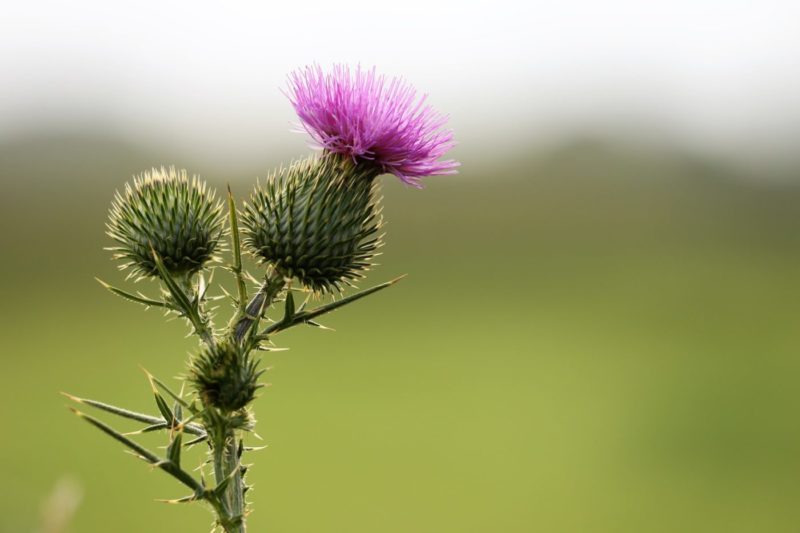
Plant burdock in loamy soil with a neutral pH between 6.6-7.5. You need soft, loose soil to harvest the roots. Burdock roots can be deep, so if you have solid, compacted soil, you’ll find getting to them difficult. I’ve had success with mixing a bit of sand and wood chips into the soil to keep it loose. This way the root is easier to harvest.
One of the reasons burdock root is so full of minerals is because of the depth at which the wild plant grows. That’s a blessing and a curse come harvest time, so prepare your soil well.
urdock is partial to
When to Plant Burdock
Plant in spring when the soil temperatures are getting warm in temperate regions after the risk of frost has passed. In warm areas, plant in the fall.
Where to Plant Burdock
Once you plant burdock on your property you will notice it popping up everywhere. This is because the seed bur sticks to everything that comes into contact with it. Keep that in mind if you have pets.
In fact, the biggest challenge to growing burdock is keeping it contained. You can snip the burs before they form and you may also want to grow them in a contained, fenced area.
Try to plant burdock where you are happy for it to self-seed and grow continuously, then you don’t have to bother collecting seeds.
Seed or Cuttings?
Seeds, seeds and more seeds. If there’s one thing you can rely on from burdock, its’s seeds. If you have wild burdock, you have probably picked the burs (seeds) from your cat, dog or child’s clothing. You can buy seeds or harvest some wild (just make sure you’ve identified the plant correctly) or from a friend’s plant. Remove the seeds from the prickly outer layer and dry.
Germinating Seeds
Cover seeds with about 1/2″ of soil and tap down lightly. Being the prolific plant it is, seeds will germinate in as little as 7 days. Keep the soil damp while the seed germinates.
Spacing
Give growing burdock 6-8 inches between plants and 24-36 inches between rows.
Caring for Burdock
Fertilizing
You can give your growing burdock a boost with an all-purpose fertilizer if you’d like, but it isn’t necessary.
Watering
As long as the soil is loamy and well fertilized, the only other thing to remember with burdock is to water it regularly. It takes a fair amount of water to grow big, healthy roots, so give it lots to drink. Just don’t overwater or the root may rot if it sits in pools of water.
Pruning
If you don’t want the plant to self-seed, snip off the flowers before they dry.
Common Problems and Solutions for Growing Burdock.
Burdock is hardy and is not bothered by too many pests, but here are a few things to watch for.
Four Lined Plant Bug

This bug damages the leaves to the point the leaf will wither and die. It will eat away the flesh of the leaf, leaving hollow spots. It overwinters eggs on the plant and comes on strong in the spring. Use neem oil to control it, although it is adept at avoiding sprays so keep an eye on numbers.
You will find very few insects bother burdock other than the four-lined plant bug. If you’re growing burdock for the root, then I wouldn’t worry about the bugs at the top too much.
Slugs
There are few plants out there that slugs don’t like to nibble, and burdock is no exception. Use your favorite slug control method to keep them at bay.
Aphids
At some point, every garden gets aphids. Luckily, they’re easy to control. Look for clusters of green or yellow bugs and spray them with a blast of water. If you plan to eat the leaves, spray with neem oil to keep aphids away without contaminating your harvest.
Mites
Spider mites are another common garden pest. You’ll usually notice the tiny little critters in their masses of webbing. Use neem oil to control.
Companion Plants for Burdock
Because burdock has such a long taproot, it pulls up nutrients from deeper in the soil, so companion plants should be anything with shallow roots, such as:
- Asparagus
- Beans
- Peas
- Squash
Don’t plant with deep-rooted vegetables or they will compete with burdock for nutrients. You will also disturb vegetable roots if you harvest the burdock first, given the depth of burdock roots. Less-than-ideal companions include:
- Onions
- Radish
- Potatoes
- Carrot
How to Harvest and Use Burdock
Burdock is a biennial which means it grows for two years before dying. Roots are typically ready 90-120 days after planting, and leaves are ready whenever you are. Harvest the root in the first year in autumn or the second year in spring. Roots can grow deep, so this is where a deep, loamy soil is handy.
You can either dig straight down to pull up the roots or dig a trench alongside the root to pull it sideways.
Use
Health-wise, burdock is used for a range of things, from detoxification, addressing skin problems, as a liver tonic or for issues connected with premenstrual symptoms. Lightly steam the leaves and then apply as a poultice to draw out infection of cuts and skin damage.
Burdock is a wonderful plant that’s easy to grow, has impressive health benefits and a tasty flavor. Give it a go because it is hard to mess this one up. What other plant lets you eat the roots, leaves, stalks and can be used as a medicinal powerhouse?
If you’re serious about self-sustainability, this is one plant to consider growing due to the multitude of different ways it can be used.
Do you have any recipes or medicinal concoctions to share with us on how to use your burdock leaves or roots?

